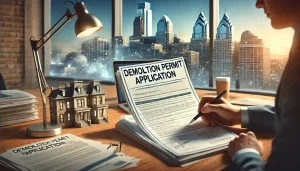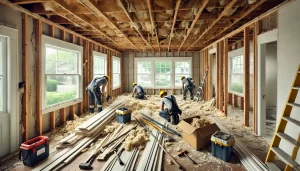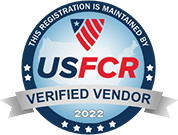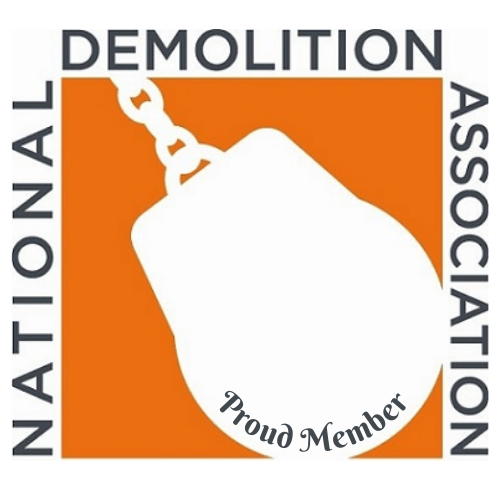Demolition is a divisive topic in Connecticut’s urban areas. It can bring about both opportunities and challenges, sometimes even at the same time. Whether it’s an old structure that needs to be taken down or an empty lot ripe for development, demolition carries with it implications of change that impact people’s lives. In this article, we explore the unique challenges and opportunities associated with demolition in Connecticut’s urban areas.
From environmental concerns to economic benefits, there are many considerations when it comes to demolition projects. How do local governments balance progress and preservation? What effects does demolishing a building have on its surrounding community? These questions are often difficult to answer but crucial when assessing any potential project.
How communities navigate these issues will shape the future of Connecticut’s cities and towns. We invite you to join us as we delve into the complexity of demolition in urban areas across the state – from small towns to big cities – and discuss how citizens can work together to create positive outcomes for everyone involved.
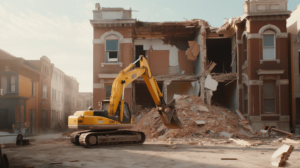

Environmental Considerations
Demolition in Connecticut’s urban areas presents a unique challenge. It carries with it the potential for both environmental damage and progress, making it an important issue to consider. From air pollution due to dust created during demolition, to landfill disposal of debris, noise control measures for nearby residents and businesses, and resource conservation techniques – these are all factors that must be taken into account when demolishing structures.
We can look at this process as an opportunity to improve our environment rather than one where destruction is inevitable. By taking advantage of recycling opportunities and ecologically sound processes for debris removal, we can ensure that what was once considered waste will now become a valuable part of our green infrastructure. We need only take the right steps to prevent further harm while still allowing progress. Through thoughtful consideration and careful planning, we have the chance to create something new from something old – something better and more sustainable for Connecticut’s future.
Regulations And Restrictions
The process of demolition in Connecticut’s urban areas is highly regulated and restricted. State laws, local ordinances, building codes, and other regulations must be followed to ensure the safety of everyone involved. There are numerous restrictions that apply to demolitions, such as requirements for dust control, noise mitigation measures, proper disposal of debris and hazardous materials, as well as limits on land disturbance activities. All these rules help protect both people and the environment from potential harm associated with demolition activities.
However, this doesn’t mean that projects have to be stalled by red tape – far from it! By working proactively together with state agencies, city officials, and environmental protection groups, developers can navigate through the maze of regulations while still ensuring that their project meets all necessary standards. This way they can move forward quickly and efficiently in a manner that benefits not only themselves but also the community at large.
Economic Implications
The demolition of urban areas in Connecticut carries with it many economic implications, both positive and negative. On the one hand, demolitions can provide a number of benefits to an area, such as:
1. Economic revitalization through increased investment in redeveloped properties;
2. Job creation for those involved in the demolition process itself; and 3. A decrease in housing stock that may lead to gentrification and displacement of lower-income residents.
On the other hand, there are also some potential drawbacks associated with this kind of development. These include:
1. The cost of removing existing structures – which could be considerable if hazardous materials must be removed or special equipment is needed;
2. Loss of jobs due to businesses closing down after their buildings are torn down; and 3. Potential environmental hazards from debris left behind from demolition activities.
It’s clear that any proposed project involving demolition within Connecticut’s urban areas should take into account these various economic considerations before proceeding forward. From weighing up job losses against job gains to evaluating costs versus possible returns on investments, developers need to carefully consider all factors at play when deciding whether or not to move ahead with such a venture. Only then can they make informed decisions about how best to proceed while minimizing risks and maximizing rewards for everyone involved in the process.
Frequently Asked Questions
What Is The Cost Of Demolishing A Property In Connecticut’s Urban Areas?
When it comes to urban areas, the cost of demolishing a property is one of the most important factors to consider. Property owners must weigh the potential savings and benefits against how much they will need to spend on the actual process. In Connecticut, the price tag for demolishing a property can vary greatly depending on its size, age, location, and other factors.
The timeline also plays an essential role in determining the overall cost of demolition in Connecticut’s urban areas. While some projects may be completed in as little as two weeks with minimal disruption to surrounding properties or businesses, others require months or even years due to stringent regulations or unforeseen complications. Working with experienced professionals who understand local laws regarding demolition can save time and money while ensuring that all necessary steps are taken before any work begins.
No matter what type of project is being tackled, coming up with an accurate estimate for how much it will cost should always be part of the planning process when demolishing a property located within an urban area in Connecticut. Staying informed about current regulations and working closely with experts during each stage of construction can help ensure that costs stay within budget while also protecting everyone involved from unexpected surprises down the line.
Are There Any Incentives For Demolishing A Property In Connecticut’s Urban Areas?
Are there any incentives for demolishing a property in Connecticut’s urban areas? With many aging buildings and infrastructure, Connecticut’s urban areas have their fair share of demolition projects. But as the cost to take on such a project can be high, it’s important to understand if there are any available incentives that could make the process more economical.
When looking at whether or not there are incentives for demolishing a property in Connecticut’s urban areas, we must first consider what types of assistance may exist. In these cases, some possible options include grants from local governments or nonprofits, access to tax credits or deductions, low-interest loans, or subsidies. All four of these potential avenues provide promising opportunities for those hoping to reduce the financial burden associated with demolishing a property in an urban area of Connecticut.
For example, many towns across the state offer grant programs specifically designed to fund renovations and demolitions within their jurisdiction. Additionally, most states offer certain tax breaks and deductions when rehabilitating older homes or businesses in designated historic districts. Low-interest loan programs often help offset costs related to demolition projects as well; they allow individuals and organizations alike to finance building destruction without breaking the bank. Finally, subsidies from public service providers like utility companies can also contribute significantly towards reducing overall expenses incurred by people tackling large projects like this one.
Are There Any Methods Of Demolishing A Property In Connecticut’s Urban Areas That Are More Environmentally Friendly?
Did you know that green demolition is becoming an increasingly popular method of demolishing a property in Connecticut’s urban areas? This type of responsible demolition process creates zero waste and considers the environment during the whole process.
Green, or eco-friendly, demolition typically involves using materials with lesser environmental impacts and avoiding hazardous substances, while also diverting construction debris away from landfills. Sustainable demolition techniques are being implemented to reduce dust and noise pollution, as well as any other negative effects on nearby communities that traditional methods may bring about. In addition to reducing air pollution, these practices often help preserve historical sites within urban areas for future generations.
Not only can green demolition processes benefit the environment but they can also save time and money by reducing costs associated with labor, equipment use, fuel consumption, disposal fees and transportation expenses. For this reason, some cities have even begun offering incentives and tax credits to those who choose to take part in sustainable demolition projects. As a result of such initiatives, local contractors have become more familiar with modern safe practices which helps ensure that properties are demolished responsibly without putting workers’ safety at risk.
What Safety Measures Must Be Taken When Demolishing A Property In Connecticut’s Urban Areas?
Demolition of a property in Connecticut’s urban areas is no small undertaking. Therefore, it is essential to take safety measures into consideration when moving forward with such a project. This includes ensuring the proper protocols are followed and that all necessary precautions are taken to ensure the safety of those involved in the demolition process.
From making sure the right equipment is used, to securing any hazardous materials onsite before commencing with demolition – there are many factors that must be considered for successful completion of this task. It is also important to keep an eye out for underground utility lines or other infrastructure that may be damaged during the course of demolition. These types of issues can complicate matters greatly if not addressed prior to beginning work.
What Is The Timeline For Demolishing A Property In Connecticut’s Urban Areas?
The process of demolishing a property in Connecticut’s urban areas may seem overwhelming, but it can be broken down into manageable steps. Understanding the timeline for demolition is an important step to ensure safety and minimize costs associated with the project.
It all begins with preparation – assessing the space, securing permits from local government agencies, and instating safety measures to protect workers and surrounding environments. After these tasks are completed, the actual demolition process can begin: Disconnecting utilities, removing hazardous materials such as asbestos or lead paint, breaking up hard surfaces like pavement or concrete, and tearing down structures like walls or roofs. Demolition usually takes anywhere from two days to several weeks depending on the size and complexity of the project.
Once demolition is finished, debris must be removed from site – either by truck or dumping into a landfill. This too requires coordination between contractors and municipalities to ensure proper disposal methods are being followed. Adhering to these timelines will help keep residents safe while minimizing disruption caused by large-scale projects in densely populated areas.
Conclusion
Demolition in Connecticut’s urban areas presents unique challenges and opportunities. It is crucial to understand the cost, incentives, environmental considerations, safety measures, and timeline when considering demolition.
The financial cost of demolishing a property can be high; however, there may also be economic incentives available for those taking on this task. Furthermore, it is important to consider green options such as deconstruction or salvage that are more environmentally friendly than traditional demolition methods. Additionally, safety protocols should never be overlooked to ensure the health and well-being of all involved. Finally, understanding the time commitment required for demolition will help you plan accordingly.
Overall, I have highlighted several key elements necessary for successful demolition projects in Connecticut’s urban areas. With knowledge about the costs, benefits, environment impact, safety procedures and timeline we can make informed decisions about whether or not to move forward with a project. By being aware of these components we can take advantage of the many potential rewards associated with demolition while avoiding pitfalls along the way. If you’re looking for an experienced team to do demolition in Connecticut, we can help!



